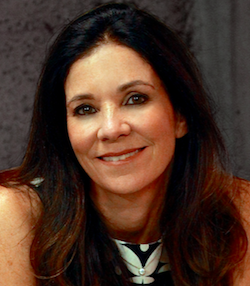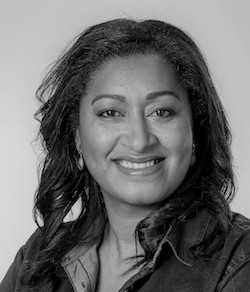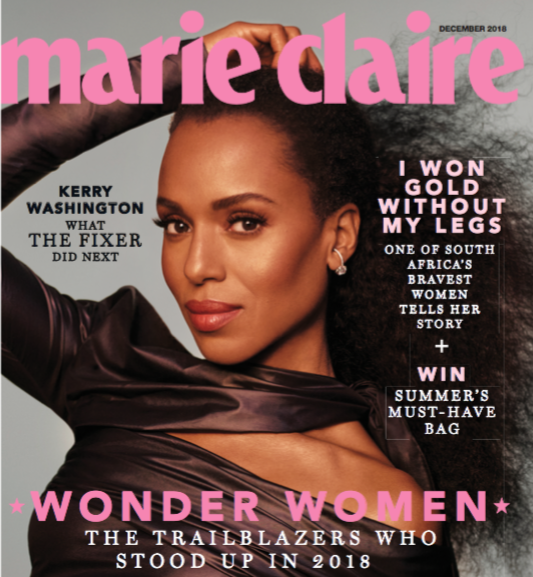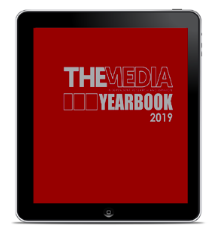The demand for diversity and transparent representation across all media platforms has seen South Africa’s struggling magazine print industry taking strides in growing brand loyalty, readership and a diverse ecosystem with innovative advertising partnerships and solutions.
If 2017 can be marked as the year Tarana Burke’s #MeToo movement went global (thanks to Alyssa Milano), 2018 was undoubtedly the year of the black woman. Speaking truth to power seemed to be the mantra, with women – particularly black women – dominating the global stage in every aspect, from athletics to politics. And, of course, they could also be found on the cover of practically every prominent magazine. This past December, for instance, South Sudanese model Adut Kech graced the cover of British Vogue, now under the editorship of Ghanaian-born Edward Enninful.

September was the month that the number of black actresses, singers and models on the cover of traditionally white magazines was highlighted in the media, though: American Vogue’s famous September issue featured Beyoncé, while singer and actress Rihanna graced the British version, Blackish star Tracee Ellis Ross did the same for Elle Canada; Oscar winner Lupita Nyong’o for Porter magazine and actresses Zendaya and Tiffany Haddish respectively graced the covers of Marie Claire and Glamour.
The impact of these covers come at a time when the print magazine sector is still fighting the impact of digital, right-wing movements are growing louder across the globe, economies are taking strain and, as Professor Glenda Daniels of Wits University’s Media Centre points out: “We are living in an increasing feminist era where especially young women are challenging the status quo – so unless women’s magazines cater for this new militancy against sexism and patriarchal culture they won’t service, attract and reach young women in this era of #MeToo, #HearMeToo and #TotalShutDown.”
Outdated model

Interestingly, in South Africa, where media transformation has long been a conversation point, racial profiling appears to be the magazine sector’s least pressing concern. “I don’t think niche titles ever had the divisiveness of mainstream women’s titles, but even so the model of ‘black’ versus ‘white’ magazines is outdated,” notes Minette Ferreira, general manager: Media24 Lifestyle. “Content and brands appeals to a market based on their interests, life experience, needs and goals.”
Circulation figures bear this out, almost across the board, with most consumer titles at all major media houses reporting a stronger black than white readership, regardless of positioning. While certain titles such as MOVE!, Kuier, Destiny and DRUM appeal to specific target markets – and others such as GQ and Glamour have black editors – it’s fair to say most have morphed into titles aimed at South Africa’s diverse population rather than classified by race – and the issue of diversity is focused largely on stabilising and growing circulation.
“I think diversification is pretty much a mantra that publishers have lived with for a long time and is really an everyday part of strategy now in terms of being wherever our audience is at,” says Debbie McIntyre, head of integrated Media Solutions at Spark Media.
Maintaining brand loyalty while meeting audience needs is paramount for titles determined to survive digital’s impact on print. “Most important is to understand your demographics – you can’t be everything to everyone – stick to your guns and don’t deviate from your editorial mix; give them what you know works,” maintains MOVE! editor, Nonzwakaze Cekete. “You lose your brand identity in trying to appeal to as many people as you can, because what interests me does not necessarily interest another 35-year-old, or reflects where we are in life.”

That the sector is suffering is irrefutable. Circulation figures, at most, have been dropping year on year. Associated Media Publishing recently announced that this December issue of Marie Claire would be its last, as the media house would not be renewing its licencing agreement with the French group. Independent black-owned media house Ndalo Media went under in December 2018, after he Sowetan Sunday World reporting in mid-November that the company was being sued by CTP Printers for R13 million debt accumulated for printing costs.
Yet the outlook, according to major industry role players, is not all bleak: Julia Raphaely, CEO of Associated Media Publications (AMP), is optimistic about leveraging titles to embrace the digital age – and focusing on diversity in terms of reinventing the business model and revisiting revenue streams by generating innovative solutions.
“Publishing companies need to have more diverse offerings for their customers: digital, video, data and analytics, marketing services, e-commerce, events. There is a need for revenue streams that don’t rely solely on advertisers and readers.
Adopting new technology – and determining how to best integrate it – proved the company’s biggest challenge in maintaining market relevance,” says Raphaely. “Changing mind-sets was also a challenge but with the right people in place, team players who are agile and embrace change, it’s all possible.”

There are bonuses to embracing change while maintaining editorial integrity, posits Cekete, pointing out that MOVE!, though aimed at women, has a notable male readership of about 27%. Complementing, rather than competing, with digital disruption has also allowed them to grow a younger audience, she adds. “MOVE! meets readers on different platforms: we’ve found that our older, matured women (35+) still have fears around digital, which caters largely to our younger audience – so we divide our readership to cater for older, traditional on print, and entice the young ones online.”
Cosmopolitan SA launched another enticing online innovation this year, partnering with e-commerce site Takealot to offer readers the opportunity to shop within its pages by scanning barcodes on mobile devices. “Something I don’t hear enough from publishers is the understanding that magazine-media brands speak to an incredibly valuable consumer and not, simply put, readers,” notes Raphaely.
“Changing the direction from content-only to a content-to-commerce focus is part of this mind-set change, and very much part of our strategy. We need to make magazine-media brands truly relevant again – both to our audience of consumers, as well as to our partners (banking, retail, etc). Whether that’s through exciting events, initiatives like our in-book Ready to Shop scan-able QR codes, or other engaging consumer-focused innovation, we have to adapt.”
Launching the QR campaign across all newsstands and using QR codes on every single AMP title served another purpose, adds Raphaely, that of driving a “much-needed and different conversation around magazine media”.
“Our single driving force at AMP is understanding how we can really serve our audiences better. Our audience being consumers as well advertising partners.
And, of course, if brands are not truly digital-first properties but merely magazines in print with digital stitched on, you’re staring at the abyss and will need to move with extraordinary speed to survive in the future. That brings me to agility. One of the many wonderful things that digital brings us is access to unprecedented amounts of data. How quickly the industry interprets and responds to the most relevant data (versus drowning in it) holds the key to survival.”
Diversity in advertising: driving engagement on multi-platforms
“Diversity within the magazine medium offers advertisers the opportunity to reach their target market more effectively with minimal ad spend wastage and better ROI,” adds Ferreira. “Think of ethnic haircare products – ROI will be less if the audience they advertised to was too diverse, so they might opt for a title with a larger black readership instead. On the opposite side, a broader appeal product would benefit more from a title with a highly race diverse readership. Relevance for readers equals targeting for advertisers. Contextual relevance matters regardless of reader diversity.”
Raphaely agrees: “Advertising works best when it’s placed in an environment that complements the brand message rather than working against it. To advertise retirement villages in Cosmo would not suit the brand’s editorial pillars – but advertising savings towards retirement, in the form of an RA, would.”
Niche or mainstream, despite declining circs, it’s clear magazines have much to offer advertisers, as a brand with a loyal base that offers an attuned market.
“Magazine brands offer a carefully edited, brand-safe but interesting environment for marketers to communicate with confidence. They’re able to provide enough unique, relevant and engaged audiences that we know enough about, at a reasonable price, and prove to advertisers that these audiences are valuable to them when they are faced with many seemingly cheaper and effective options (Facebook, Google and Amazon) to reach consumers,” notes McIntyre.

The upside to this is that while traditional print advertising has taken a downturn, campaign partnerships are on the rise, reveals Media24 brand manager, Roxanne Cloete.
“Activation is where it’s at; advertisers now want to book print ads with targeted campaigns because we have the audience they want to reach out to, to talk about their offerings. Our audiences are very powerful; they share their experiences of our campaigns, and that word of mouth is very powerful. If we look at ROI on sponsorship packages, the client’s minimum return is more than 100%,” Cloete says.
Cekete confirms this: “People are looking for experiences, and brands that traditionally advertise with publications understand that – they know that readers will be reached in terms of the product, and more advertisers are not looking for traditional methods; they want to know: ‘what you can offer me that will add value?’”
Events, adds, Cloete, offer the classic platform for reader engagement, especially as they’re immensely popular with loyal readers. “They want to learn about the magazine, and the people behind it. They also to have fun, so they’re willing to pay for the ticket to do that.”
Though hardly new, events are they’re certainly on the increase. They’re now, adds Raphaely, “acknowledged as a vital part in a magazine media value chain.” AMP, she reveals, has hosted 200 premium lifestyle events in the last five years, on multiple channels – and has more than 35 partnered events planned for 2019.
“The starting point is, as with so many things in our industry, data – we use the insights we have gathered to create events our audiences of consumers love. They trust that our fashion, beauty and lifestyle content inspires is leveraged using the latest tech to enhance amplification and reach through our brand channels, while strategic marketing plus our radio and television partnerships maximise the ROI for our clients,” she says.
Media24 has also launched a new events division – Media24 Lifestyle Live – which, says Ferreira, “is leading the charge to enhance our quest for reader revenue.” The division will work to dramatically scale the company’s portfolio of ticketed events in the future, adds Ferreira. “Our goal is to create experiential platforms where our diverse audiences can engage with our brands and our commercial partners in an authentic way. We will segment our experiential strategy into three categories: signature events such as Women’s Health’s Fit Night Out or True Love’s Night of Style; series such as MOVE! Stokvel, career master classes, style and beauty tutorials, wellbeing insight, exclusive fitness classes and networking sessions, and bespoke events on behalf of clients.“
That South Africa’s magazine sector has issues to deal with is clear, clearly the black and white issue of race is not one of them; diversity, all agree, is a key element of long-term sustainability.
Two prominent UK studies, released in 2018, reveal that the issue of black vs white in magazines – editorial and advertising – is still, in 2018, a hot topic. In April, research released by The Guardian’s data team on a study of 214 covers published by 19 bestselling glossies in 2017, showed that only 20 (9.3%) featured a person of colour.
Another study, by Leeds Beckett University, on eight issues of mainstream women’s magazines from 2015 to 2016 showed that the representation of black women in magazines largely pandered to a young, slim, light-skinned, straight-haired ideal.
In contrast, women in black magazines were more diversely represented, with weightier women with darker skin featuring across editorial and ad pages. The issue of transparency in diversity was heightened in October, when a viral tweet claimed that the US’ Essence magazine – a legacy black women’s mag – had used a black female photographer for their cover shoot for the first time in its nearly 50-year history.
The magazine punched back with an illustration of a 1981 cover shot by black female photographer Phyllis Cuington-Wier – and a detailed overview of the various programmes and campaigns it had and was running to empower black creatives.
In similar fashion, much was made of Beyonce’s deep dive into her Vogue alliance: the singer reportedly took over the issue for the month, in true diva style, selecting her shots, overseeing captions and, more pronouncedly, getting the publication to hire African-American photographer, Tyler Mitchell, to shoot the cover for the first time in its 126-year history.

Lucinda Jordaan is an independent writer, researcher and editor with extensive experience in all media, covering various fields from academia and finance to education and lifestyle. Her articles have appeared in several award-winning publications, locally and internationally, and she has contributed to various books and online sites, including The Media Online.
Read The Media Yearbook, here. Our annual look at trends, issues and research impacting on the media space. Click on the cover image to access the digital magazine.















